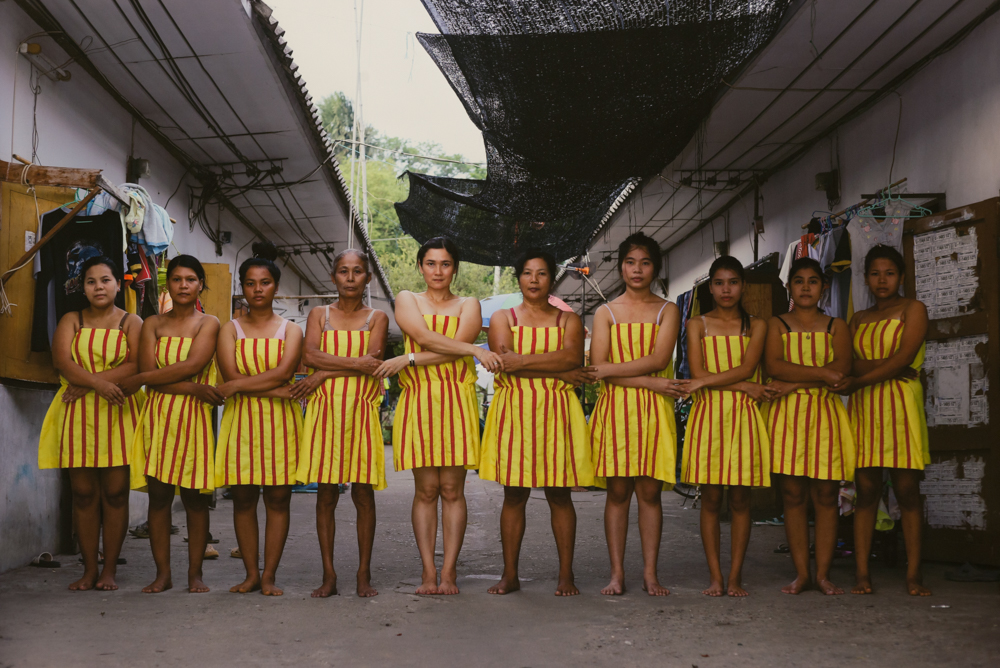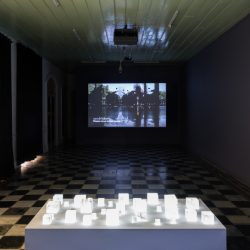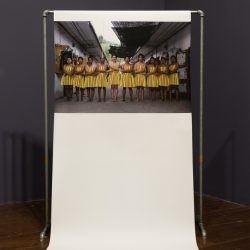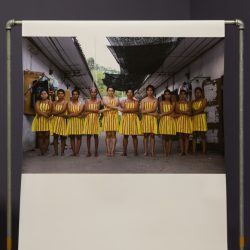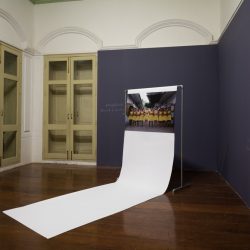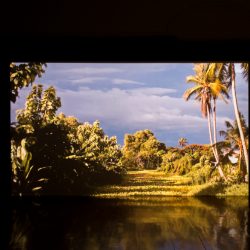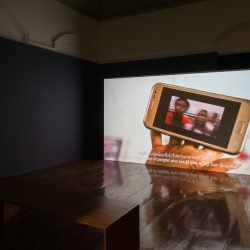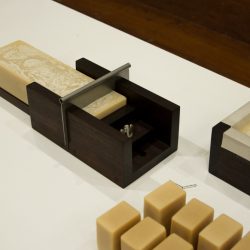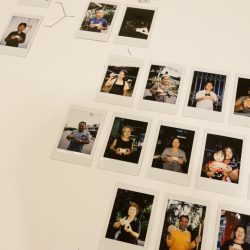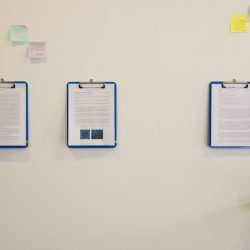365 DAYS LIFE MUSE BY BAAN NOORG COLLABORATIVE ART & CULTURE USES ALTERNATIVE AESTHETICS TO NARRATE THE LIVES OF MYANMAR IMMIGRANTS
It has been over a year since Thailand officially entered the ASEAN Economic Community. We now know greeting phrases of all our neighbor countries, Myanmar’s national costume and the flags of the ten countries. We also have a flag representing our community and the ASEAN Day (August, 8th) commemorating the union. We will continue to memorize the ten countries’ national ‘…’ (animal, and so on) while for over half a century, the history lessons being taught to our youth still encourage the use of broomsticks to teach Burmese maids a lesson and continue to wrongly educate our citizens that Thai people came from the Altai Mountains and have been living in unity under one state since the Sukhothai era to the Rattanakosin period. Such irresponsible conclusion in our nationalistic history lessons is one of the reasons why Thai society has never really understood the nature of immigration or relocation of people within the region, which plays a significant part in both past and future economic development. It makes us so proud of our identity that we are accustomed to the insults inflicted on our neighboring countries. When an attempt to change such a negative attitude is not what the state is trying to do or intends to do in the near future, the question is how can we, as the citizens of this country, be a part of the solution?

365:Days Life Muse, Photo by Napat Charitbutra
365: days LIFE MUSE, a model that studies the lives of foreign laborers in the Nongpo Community, Potharam Distract of Ratchaburi province was conceived from such question. The project is a continuum of DAY OFF LABoratory (Pop up Museum) initiated by Pohnpilai and Jiradej Meemalai of BAAN NOORG Collaborative Art & Culture to experiment with the artists’ ability to develop their artistic creations even when without a proper art institute or studio. DAY OFF LABoratory is also one of the reasons that inspired BAAN NOORG to start taking on a community-based approach instead of a studio-based approach where the ability to communicate with the general public is still limited. Nevertheless, the community-based approach has brought about one problem, which will be discussed later in this article.

365:Days Life Muse, Photo by Napat Charitbutra
The first leg of DAY OFF LABoratory (Pop up Museum) allowed for BAAN NOORG to obtain a better understanding of the community’s history as they came across the fact that the area has seen the constant immigration of populations from the Dvaravati period to the expulsion of Thai Yuan from Chiangsean during the early Rattanakosin era and the situation happening with the foreign workforce today. Such influx existed before and after the inauguration of the ASEAN Economic Community, including the arrival of Chaw Su and Kyaw Moe, the two Burmese men who started working in a factory in Ratchaburi in 2010. Additionally, questions such as, ‘where does this feeling of otherness we feel towards the foreign people come from?’ are neither new or have they yet been answered, with the undeniable fact being that we are all a part of the people who came to this land by one way or another (right now the deviated history lessons are to be blamed). Another equally important and imminent problem is how we can live with this ‘otherness’ in the future, especially when a good number of research works on demography tell us that in ten years time, the proportion of the foreign workforce in Thailand will continue to rise to the point where only 30% of the population in this country will be considered Thai.

Saponification Case, 2016 by Jutamas Buranajade and Piti Amraranga
365: days LIFE MUSE began with the finding of Burmese workers to join in the project with Surapohn Lertwongpaitoon being responsible for the copywriting that provides the details of the project and roles of the participants. After the posters were made and distributed, it didn’t take long for Chaw Su and Kyaw Moe to contact the project’s operators. As the only group of people who showed interest in participating in the project, the interview took place and was conducted by Mao Day, a Burmese artist and NGO (the project’s consultant who helps with communication and the building of trust with the Burmese laborers). The two signed a contract with the project under the condition that both Chaw Su and Kyaw Mo would live in the home provided by the project and work with the artists in residence there on every Sunday for a total period of one year. During this one-year duration, Chaw Su and Kyaw Moe developed a work of project mapping, they themselves serving as a component of said project, which helped the initiative to garner better access to the Burmese community. They were also asked to invite their Burmese friends to create works and collaborate on art projects. The final results included 19 works and 3 works of research exhibited at the Art Centre, Silpakorn University between the 26th of January and 25th of February 2017 as a showcase of the project’s visual art research achieved over the past year.

365:Days Life Muse, Photo by Napat Charitbutra
Within the period of one year, both Chaw Su and Kyaw Mo worked with 19 artists and 3 visual art researchers from different countries of South East Asia, Asia and Europe. The project invited these collaborators to facilitate regional collaboration and generate diverse perspectives from both the aspect of a medium and the society (particularly the researchers from Europe, a region that is currently facing immigrant issues similar to Thailand). All the works were finalized with both Chaw Su and Kyaw Mo as their collaborators from Motorcycle Washing (2016) by Masaru Iwai, a work of video art that reflects the flaws in foreign labor protection laws and the fact that they do not support the living and well-being of foreign laborers in Thailand. Iwai asked Burmese workers (introduced by Chaw Su) to wash motorcycles at the communal ground in Nongpo Temple as he filmed the activity where motorcycles represent the inequality of the foreign laborer’s rights to drive personal vehicles. The issue of inequality in legal rights is also depicted in the work of Ma Fi (who faced problems in applying for a visa to enter Thailand), a Dawei artist who came into the area and was introduced to a Dawei community. The poor living quality and policy inequality that still remain in the neighboring countries such as Myanmar and Cambodia inspired the artist to create a piece of clothing whose colors playfully mimic the color of the AEC flag, which she wore while standing hand in hand with other Dawei people as a mockery of the images of the nations’ leaders at the ASEAN Summit. The work is called Asean (2016), and is conceived as a protest to the inequality that is still going on within the region. Another group of works attempts to understand the identity of Burmese laborers such as Getting to Know You (2016) by Katherine Nunez, the Filipino artist from 98B COLLABoratory, who uses the simple technique of surface rubbing as an artistic approach. Nunez asked Chaw Su and Kyaw Mo and their friends to collect the surfaces of any materials they found to be meaningful to them, believing that the method would allow for one to understand the thought process and beliefs of the foreign laborers. The works were later showcased as an installation piece at the exhibition. Chi Yu Wu’s video art goes by the name of ‘A Private Collection’ (2016) where the artist interviewed Chaw Su and Kyaw Mo about their hobbies and how they often spend their free time watching movies. The video projects the moving images taken from the films and real life footage. Just like the interview, the erratic change of topic from non-fiction (movies) to the reality when Aung San Suu Kyi visited Burmese laborers in Samutsongkram province before it reached the loose ending finale with the phrase ‘you will never understand their feelings unless you put yourself in their shoes.”

365:Days Life Muse, Photo by Napat Charitbutra
There are several other works that are not mentioned here but the examples elaborated upon earlier can provide a better picture of what a community-based approach is actually like. One of the major problems about the community-based approach, however, is its focus on the content and process, which in many cases results in an unorthodox aesthetic of the works. For instance, in the case of this project, once the works in the exhibition room are programed to tell the stories or the ‘actual processes and outcomes’ which took place in the form of the collaborations between artists and Burmese laborers (pretty much the same concept as Relational Aesthetics with the difference being 365 gives a more tangible outcome, which is the improved quality of life and attitude of the laborers), such nature of the works could overshadow their own aesthetic quality as us viewers notice the prioritization of the artists’ ability to efficiently convey the subject matter or content from the exhibition’s pamphlet or what the curator refers to as a ‘guidebook,’ which is created to help the works communicate with the audience better. The fact that the conveyance of content and the process are prioritized over the aesthetics of form leads to another dilemma of how community-based, which BAAN NOORG views as a new approach that could potentially propel the future of contemporary art, defines itself and if it can really be defined as art. Because the truth of the matter is, once it abandons the key functionality of art (in most people’s perceptions) such as the visually perceived aesthetics, how can artists from this movement or genre survive the nature of the art market today?

365:Days Life Muse, Photo by Napat Charitbutra
This issue is not too hard to answer considering how art projects of this nature do not always have to rely on collectors due to their rising functionality in the society and ability to transform themselves into art organizations for communities with their own means to properly acquire financial support from agencies in both the governmental and private sector. Nevertheless, taking itself away from the studio to a community-based approach can be risky considering the fact that the roles of these art organizations may overlap with those of the NGOs who are now criticizing artists’ social works and projects and whether they are really qualified and knowledgeable enough to perform such tasks. There is even an accusation saying that artists use communities only as their artistic resources to accumulate fame and recognition for themselves. As viewers, the matter needs to be looked at case by case, but for 365: days LIFE MUSE, the most tangible outcome is the fact that both Chaw Su and Kyaw Mo are now able to adjust themselves well to the Thai community. It would be pretty awesome to see this model study being adapted to other areas not to mention how it is very likely that we will get to see ‘community artists’ collaborate with community architects in other projects in the future.
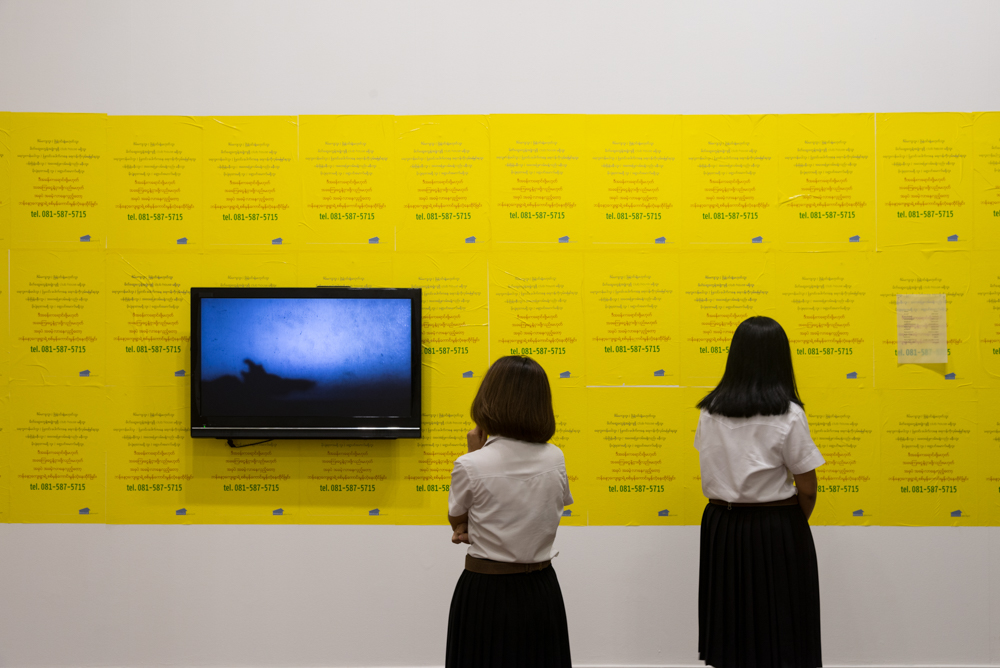
365:Days Life Muse, Photo by Napat Charitbutra
TEXT: NAPAT CHARITBUTRA
www.jiyanyin.com

